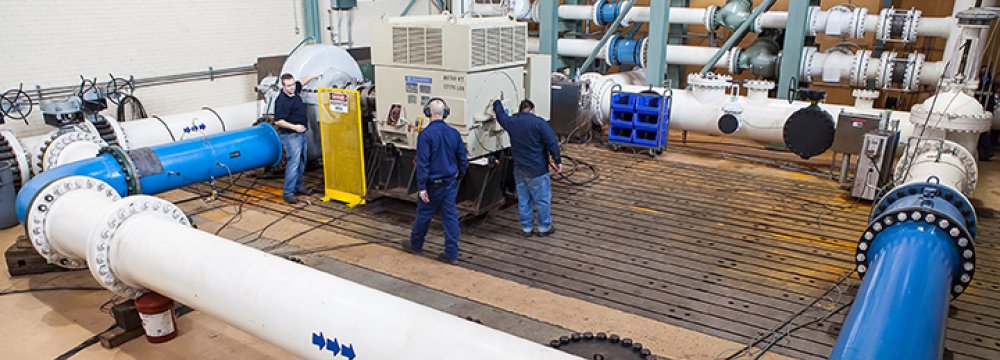Domestic experts have indigenized a cutting-edge pump that will help significantly increase extraction rate from oil and gas fields, managing director of state-owned West Oil and Gas Production Company said.
"The new ejector pump, manufactured by Razi University experts in Kermanshah Province, is being tested in oil and gas fields in the west of the country," Saeed Nasseripour was quoted as saying by ISNA on Saturday.
Pointing to a memorandum of understanding signed between WOGPC—a subsidiary of Iranian Central Oil Fields Company—and Razi University, Nasseripour said, "The agreement will help WOGPC to rely on domestic know-how to address its operational and processing challenges."
According to the official, the equipment is considered an alternative to mechanical vacuum pumps, as it does not need any source of power other than the natural flow of gas, known as motive gas.
Because they have no moving parts, they are reliable vacuum producers and easy to install, operate and maintain.
"The overhaul of facilities and installations in the west is undertaken by WOGPC's technicians," Nasseripour said, adding that there is no need to employ foreign contractors to carry out maintenance operations. Asked about oil and gas extraction rates in fields managed by WOGPC in Lorestan, Ilam, Kermanshah and a part of Khuzestan, the official said close to 7 million cubic meters of natural gas, 7,000 barrels of gas condensates and 200,000 barrels of oil are produced on a daily basis from 12 fields in the region, five of which are among the joint fields with Iraq.
"Nonetheless, the fields are in the middle of their life cycle and production from some is declining," he said, noting that the output of hydrocarbon reserves will experience a decrease unless new technology used in ejectors and submersible pumps is employed.
Recovery Factor
Iran holds more than 700 billion barrels of oil with a recovery factor of nearly 25%, or about 177 billion barrels.
Recovery factor is the ratio of technically and economically recoverable reserves to the total amount of oil in a reservoir.
Reportedly, a 1% increase in recovery rate will translate into 7 billion barrels of crude oil. This will bring in more than $280 billion in revenues with oil priced at $40 per barrel.
Recovery factor in Iranian oilfields ranges between 5% and 60%.
According to Oil Minister Bijan Namdar Zanganeh, Tehran has prioritized plans to develop joint fields and boost the extraction rate from operational fields.
Iran is also home to the second largest gas reserves in the world after Russia. Iran (34 trillion cubic meters) and Russia (32.6 tcm) hold the largest proven gas reserves, according to BP Statistical Review of World Energy 2015. But the US Energy Information Association places Russia ahead of Iran with an estimated 49 tcm.











Add new comment
Read our comment policy before posting your viewpoints